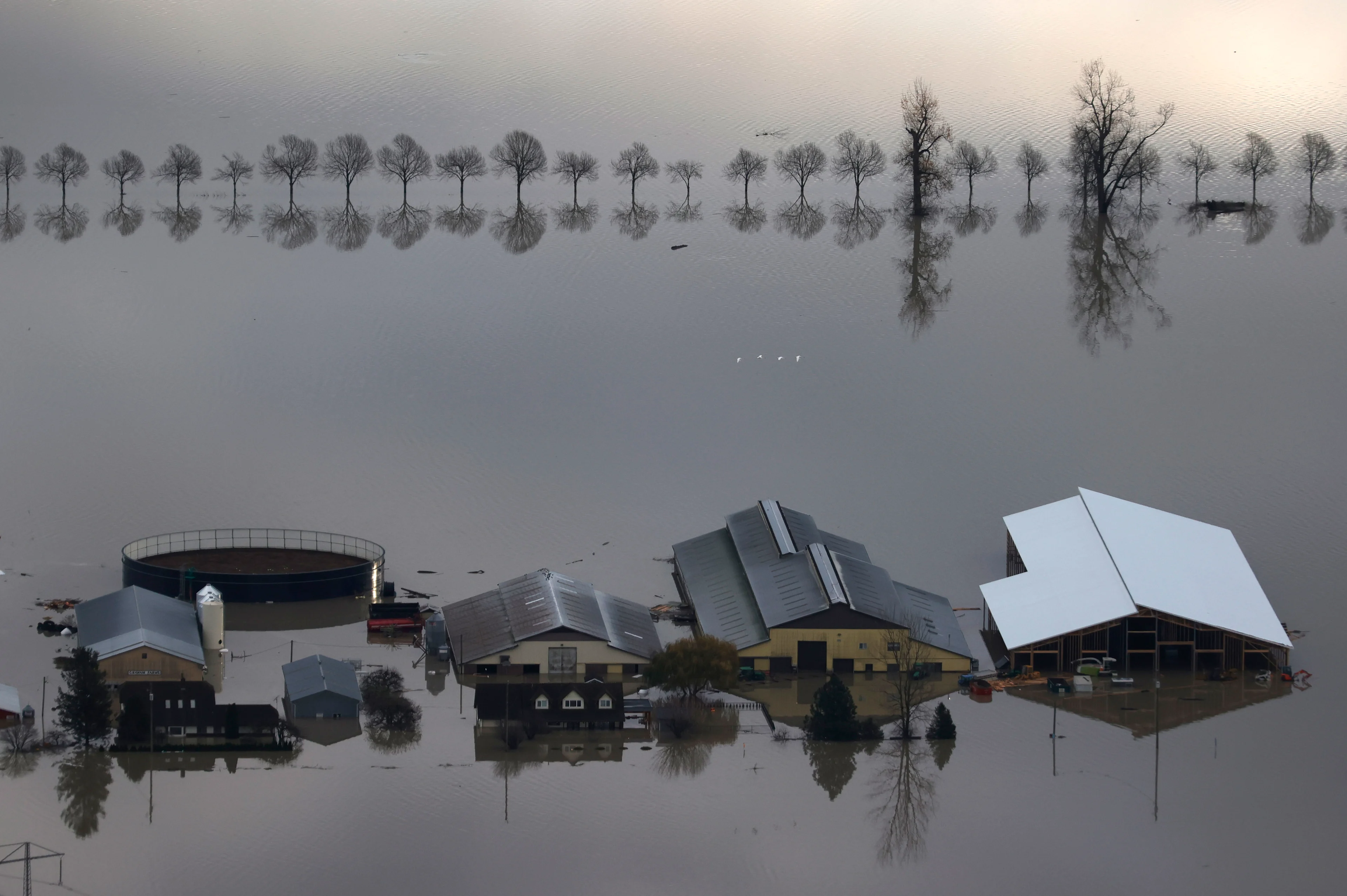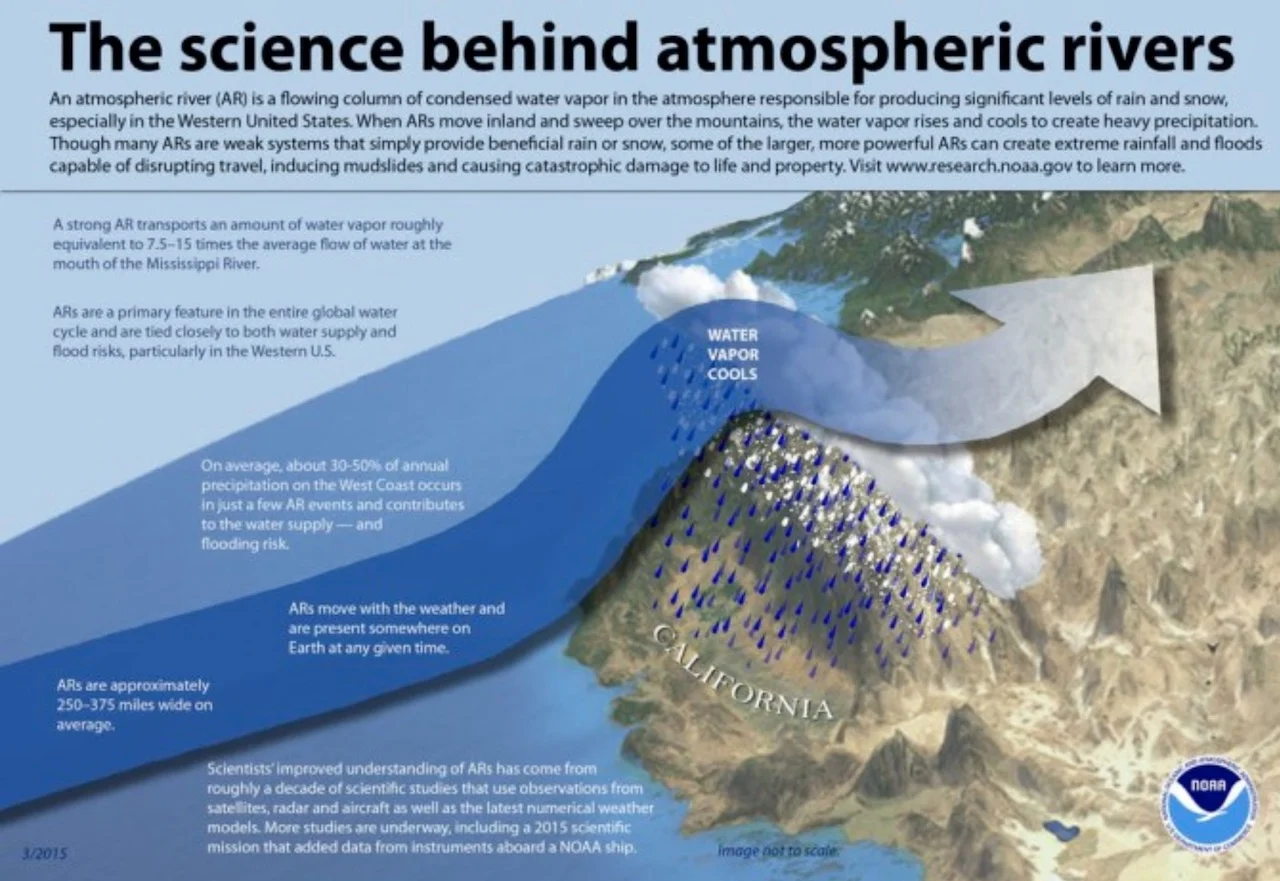
Atmospheric rivers becoming so intense we need to rank them like hurricanes
A recent study outlines how an atmospheric river ranking system could be implemented on a global scale to better understand the impacts on different regions.
Atmospheric rivers have been making headlines over the past couple of years.
At their worst, they have been the cause of major flooding in California as well as devastating flooding in B.C.’s interior in 2021 — along with even more flooding in the province this past winter. And many experts have noted that global climate change caused by burning fossil fuels is making these events worse.
Atmospheric rivers are, for the most part, what you might imagine from the name — rivers in the sky. They’re long, narrow bands in the atmosphere that carry large amounts of water vapour, usually from the tropics where water and atmospheric moisture are abundant.
These rivers in the sky can occur anywhere in the world, but they often impact the West Coast of North America, such as British Columbia in Canada and California in the United States. This is due to the mountain ranges, which push the air up to the point where the moisture will condense and fall back to the surface as rain.

Atmospheric rivers are actually a fairly common meteorological phenomenon, but we tend not to notice because they are often weak and provide beneficial amounts of precipitation. It’s the strong atmospheric rivers that cause mass flooding and structural damage we tend to hear about more in the news. The increase in impacts from these powerful storms has prompted researchers to develop a better way to warn people about the severity of atmospheric rivers.
Ranking atmospheric rivers
In 2019, researchers published a paper introducing a method of ranking the intensity of atmospheric rivers in the United States on a scale of one to five based on the total amount of water transported over the event. This would put atmospheric rivers on a similar, albeit much less severe, ranking scale as tornadoes and hurricanes.
The Weather Network and MétéoMédia have used the University of California San Diego’s atmospheric river rankings for the past couple of years as a way to convey the intensity.
A similar ranking system was supposed to be introduced in Canada early last year, but that has yet to happen due to Environment and Climate Change Canada requiring more research on the subject.
Earlier this year, another paper was published outlining how this ranking system could be implemented on a global scale.
WATCH BELOW: Science Behind the Weather: Atmospheric Rivers
Atmospheric rivers are ranked on two metrics: how much water vapour they transport and how long they last. Essentially, if an atmospheric river carries lots of water and lasts for a long time, it will get a higher rank such as AR4 or AR5. Conversely, if it doesn’t carry much water and is short-lived, it will get a lower rank such as AR1 or AR2.
However, the amount of water vapour transported and duration of the atmospheric river are not always congruent.
“For the same total amount of water vapour, atmospheric rivers can differ in terms of how long they last or how intense the water vapour is at the given moment,” Bin Guan, a University of California project scientist at the Los Angeles Joint Institute for Regional Earth System Science and Engineering, told The Weather Network. “For example, in the West Coast, especially California, what we found is that if an event lasts longer, then the impact is going to increase dramatically. So sometimes duration is a more important consideration in this part of the States. But in other parts of the world, we don’t really understand whether duration is more important or if instantaneous intensity is more important.”
That is why the amount of water vapour transported and the duration of the event must be looked at as two individual metrics instead of as one inclusive metric — to account for the different ways atmospheric rivers around the world may behave.
What we saw in California this past winter wasn’t the doing of just one strong atmospheric river – it was multiple back-to-back events. Only one of the events was ranked high at an AR4, but the rest were all low-ranked events that ended up further amplifying the impacts of the one before the last.
READ MORE: California superbloom emerges following extremely wet winter
The importance of ranking atmospheric rivers in our changing climate
Having a globalized system to rank events helps scientists to compare and evaluate events across locations all over the world. These systems are already in place for natural disasters such as hurricanes, tornadoes, and earthquakes, and have aided researchers in their studies.
Most importantly, though, “[it] helps the public to understand and to prepare for these events whenever they are coming,” Guan said.
This is even more true in the face of climate change.
Guan explained that as the climate warms, it will be able to hold more moisture in the atmosphere, thus fuelling more frequent and more intense atmospheric river events. What we will end up seeing is a shift towards more frequent extreme atmospheric river events, such as those ranked AR5.
Events that are already ranked high will remain high, since the scale caps at AR5. However, the number of events that are currently ranked lower on the scale would be promoted to higher ranks, while events that don’t currently meet the criteria for the scale would be promoted into the lower ranks. “So what you end up having is a relatively stable number of AR1s and AR2s in the future, but the most extreme events, especially AR5s, would keep increasing,” Guan explained.
The increased risk atmospheric rivers pose to societal safety given our changing climate makes it crucial that we have a better understanding of this phenomenon. As more research is done, modifications may need to be made to this scale and others like it to accommodate for the new normality of increased severe weather events.
“Maybe someday we would need an AR6 on the scale — we don’t know,” Guan mused.
Thumbnail image: In an aerial view, floodwaters surround homes and farms on Nov. 20, 2021 in Abbotsford, B.C. The Canadian province of British Columbia declared a state of emergency on Wednesday following record rainfall earlier this week that has resulted in widespread flooding of farms, landslides, and the evacuation of residents. (Justin Sullivan/Getty Images)












